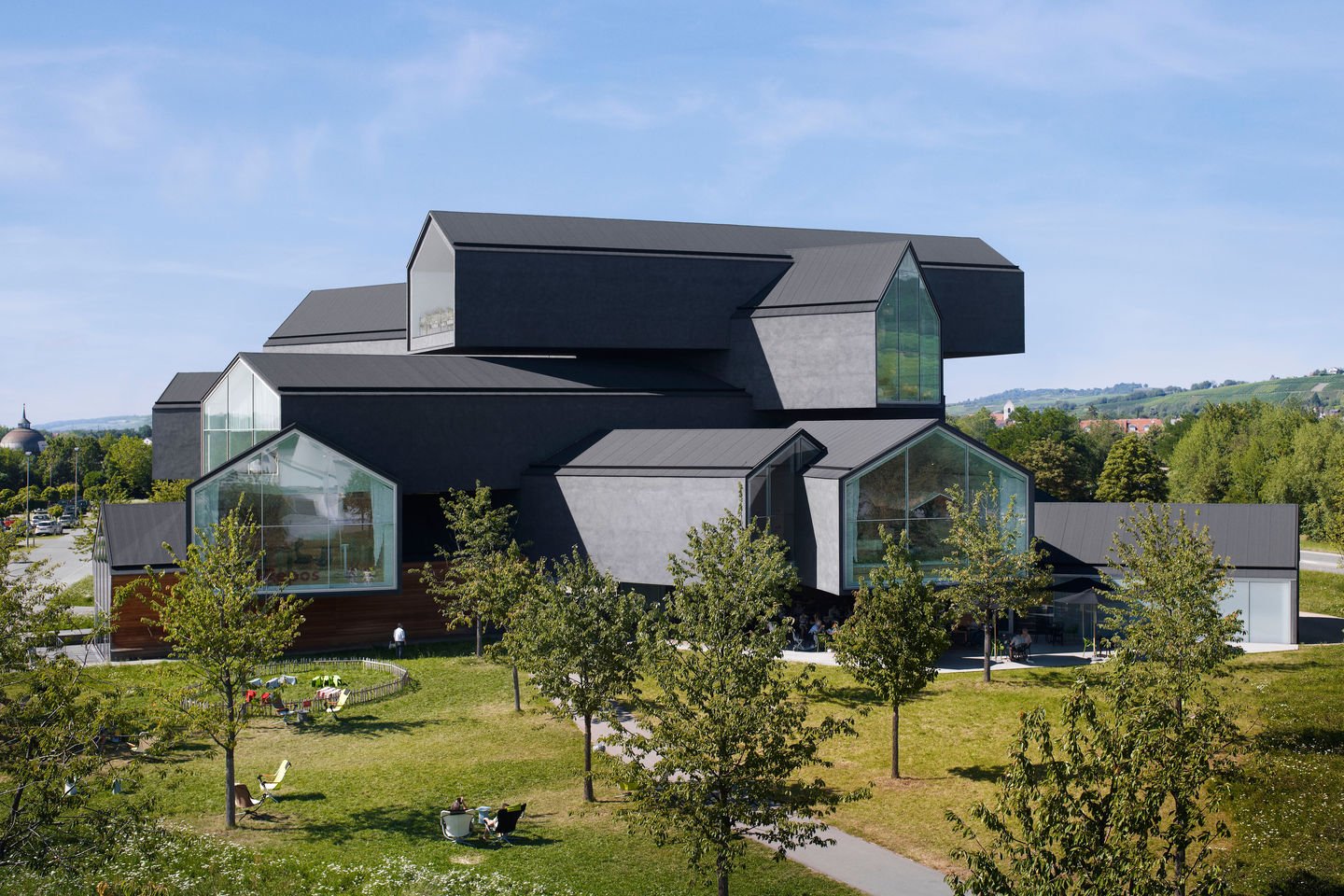#8383. Deconstructivist Facade: A Composition of Contrasts and Geometry
This impressive architectural object represents a striking example of modern deconstructivist architecture. The building stands out with its dynamic composition consisting of several geometric volumes of different shapes and sizes that seem to layer upon each other, creating a sense of controlled chaos and movement.
The facade is characterized by a bold contrast of materials. The main volumes are finished in dark gray and light gray colors, creating a graphic, sculptural effect. Special expressiveness is added to the facade by glass elements in the shape of houses or prisms that cut into the main geometric masses of the building. These glass inserts not only provide natural lighting to the interior spaces but also serve as a key architectural technique, adding lightness to the massive structure and creating an interesting play of light and shadow.
The compositional solution of the facade is deliberately asymmetrical, emphasizing the modern, avant-garde character of the building. There are no conventional architectural elements here – cornices, columns, or other classical details. Instead, the architect relies on pure geometry, the relationship of masses, and the contrast of materials to create an expressive image.
The surrounding landscape with young trees and green areas softens the brutality of the architecture, creating a pleasant interaction between nature and the built environment. The building is likely a cultural or public center, as evidenced by the open spaces around it and its scale.
In private home construction, similar techniques can be adapted through the use of contrasting materials, asymmetrical compositions, and protruding geometric elements. Even on a smaller scale, one can experiment with volumes, creating dynamic facades using glass inserts, various textures, and playing with light.
